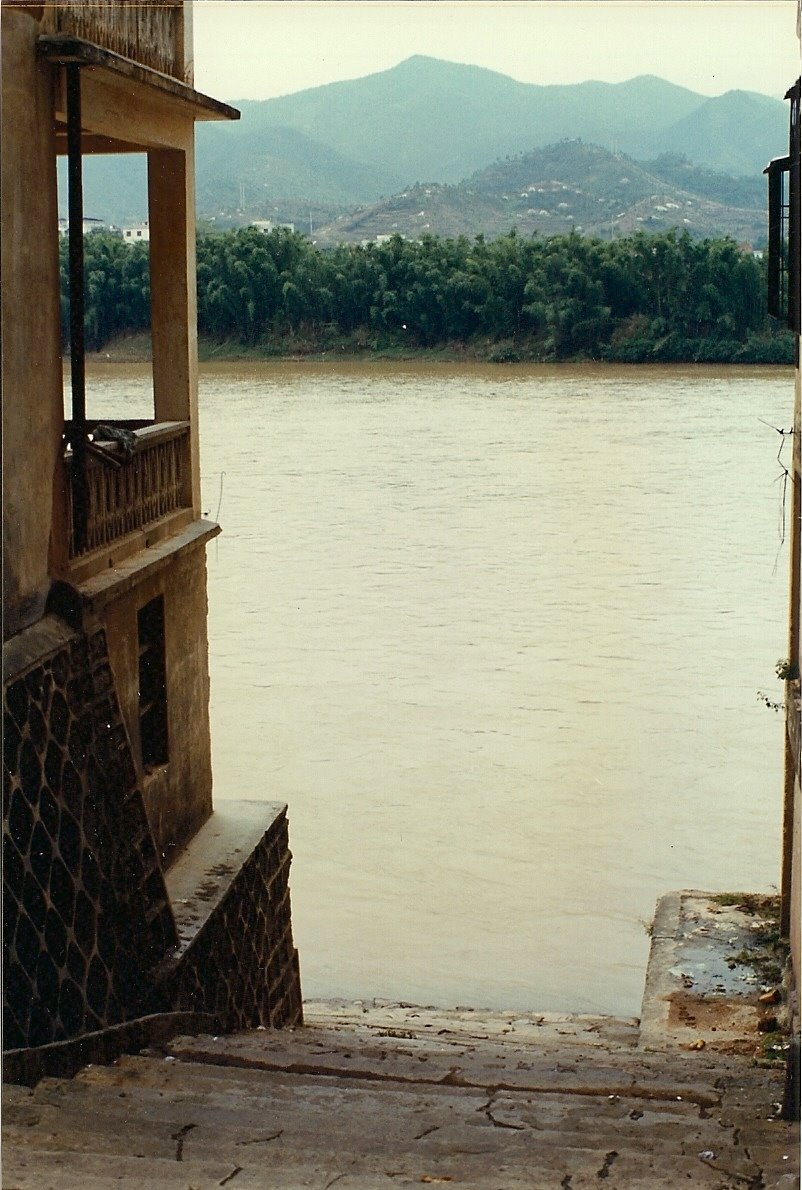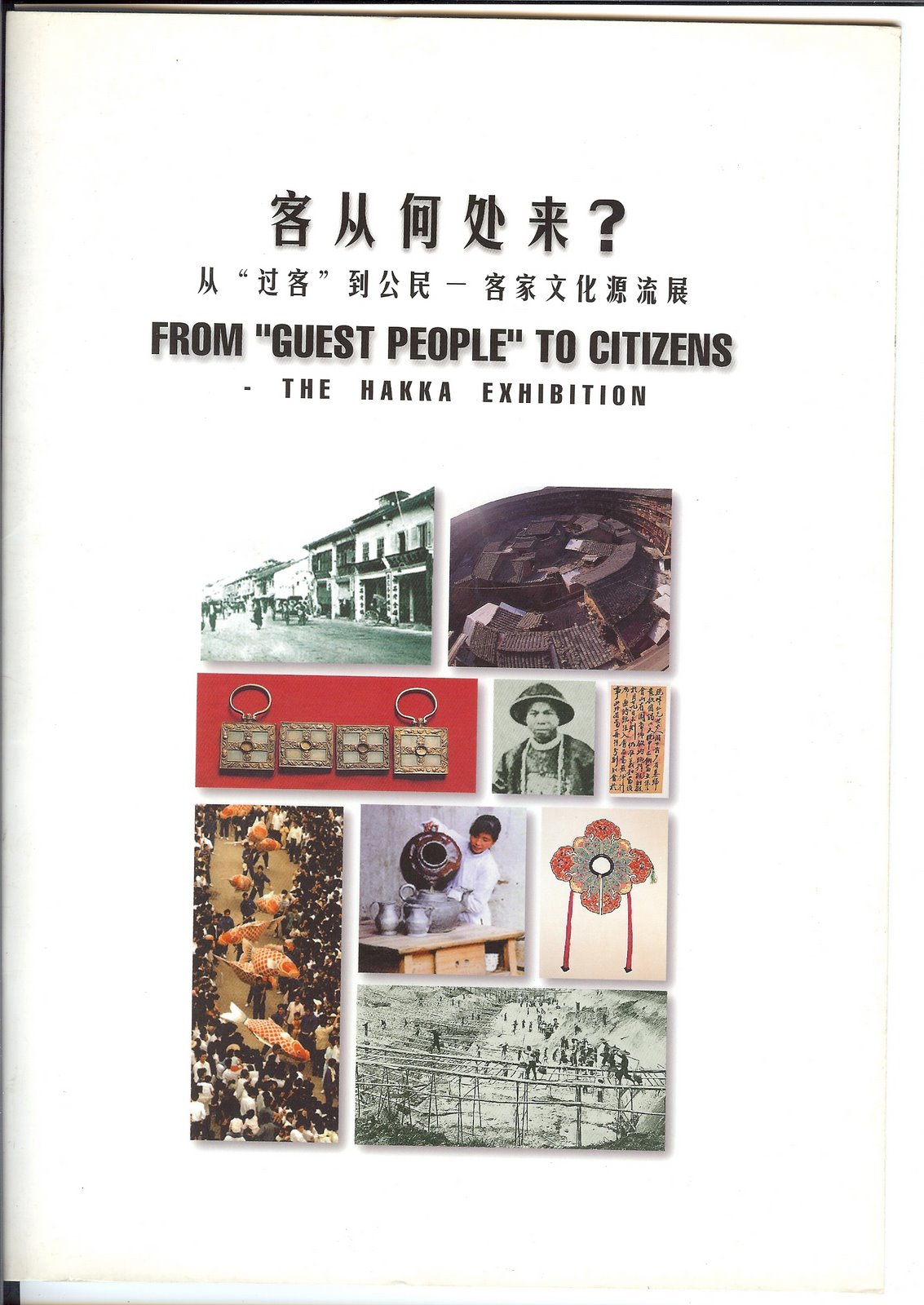 A talk last Saturday, at the Ying Fo Association-新加坡应和会馆- at Telok Ayer Street prompted me to search thro my library of books and pull out this booklet that I had of him.
A talk last Saturday, at the Ying Fo Association-新加坡应和会馆- at Telok Ayer Street prompted me to search thro my library of books and pull out this booklet that I had of him.The topic of the talk was – Understanding Japan Anew – 重新认识日本 – chongxin renshi riben.
The talk was divided into two topics of an hour each and was conducted in Mandarin. The first hour was by a journalist of the local Chinese daily who is a commentator on Japan - its politics and society. The second hour was by an assistant professor cum CEO industrialist who is the president of the association. The common thread between HZX and the two speakers is that, they are of Hakka – 客家-ethnicity.
Perhaps this talk was organized because of the recent thaw in relationship between China and Japan – and to give the folks here an afresh understanding of Japan. The recent normalizing of relationship between China and Japan, which was frozen during the Koizumi years, and which culminated in mass demo in China, I believe have a subtle but significant impact on how the local Chinese here, particularly the older Chinese educated folks view Japan.
And this talk was held to give an afresh perspective on our understanding of Japan. And who would be more qualified and better to do that than these two gentlemen who were educated in Japan, and are also deeply engaged with Japan in their career. In Mandarin they are the - 日本通 - riben tong - an old Japan hand. While in Japanese they would be deemed the – 知日派 – chinichi ha – zhire pai (pinyin).
The two terms would have a different connotation perhaps – with the- 日本通 – taking a on a more neutral stand of being an expert of Japan, while -知日派 – in Japanese would carry a meaning of being pro-Japanese.
Now back to HZX, the Hakka connection and Japan –
A diplomat and great literary figure of the old school HZX lived the twilight years of the Qing dynasty (清朝). In 1891 he was posted as the High Commissioner of the Qing Emabssy in Singapore.
I first got to know of HZX while attending the Hakkalogy conference in Singapore in 1996 in the search of my ethic roots. On a trip to the ancestral homeland the following year I visited Meizhou-梅州-and his old residence – 人境庐 – renjing lu . The souvenir booklet was from the visit, and it has a brief introduction of his life history, his works and his residence.
HZX - is perhaps the first Chinese –日本通 – of the modern era. After passing his imperial examination in 1876, he was posted to the embassy of the Qing Court in Japan the following year as a diplomat. While he was there, he researched the history of Japan and studied her experience of nationhood during the Meiji Restoration – 明示維新。
 He subsequently wrote the - History of Japan - 日本国志 – riben guozhi. He has also another welll-known work on Japan. The close to 200 odd poems that he penned on his observations of Japan & her society during his stay there was later complied into an anthology of poems known as - 日本杂事诗 - riben zashi shi .
He subsequently wrote the - History of Japan - 日本国志 – riben guozhi. He has also another welll-known work on Japan. The close to 200 odd poems that he penned on his observations of Japan & her society during his stay there was later complied into an anthology of poems known as - 日本杂事诗 - riben zashi shi .Well, so much for the Hakka connection and Japan, it was perhaps only logical that the Hakka association in Singapore organized the talk – to re-afresh the understanding of the locals of the Yamato race – 大和民族 – dahe minzhu.
Postscript -
1) On 知日派 & 親日派
While studying in Japan – there was a Japanese senior who was my research lab mentor and we used to talk about non-academic stuff when we go out for lunch. He would jokingly said that if it was during the War, one would be considered a - shin nichi ha – 親日派 – qingri pai - namely belonging to the pro-Japanese clique if someone were close to Japan then.
親日派 – shinnichi ha - is definitely a term for the pro-Japanese, while - 知日派 – chinichi ha - could mean some who knows Japan.
2) The 2nd speaker was prepared for tough questions from the audience, and he had well prepared himself and anticipated that. After all the positive pointers that he presented of Japan in the talk, an elderly member from the floor during the Q&A session asked – what were some of the negative things about Japan.
The 2nd speaker was all ready to flash out on the screen, old photographs of WWII Japanese occupation of Syonan - 昭南– school children bowing to the - Hino maru - 日の丸 sketches of atrocities of the Japanese military by artist Liu Kang.
Singapore’s government policy towards Japan had since the 1960/s been to forgive but not to forget. Being a small island nation, she has to take a practical and realistic stand – and even though there was a significant Chinese population that has lived thro the Japanese occupation – cool headed policies that benefited the country took precedent above all else.
Japanese industries were encouraged to invest in Singapore, and over the years there is a strong community of expatriate on the island – living as it had been always in their own community.
Which, in actual fact the Japanese community in Singapore is nothing new. They were first here as early as the 1850/s and culminated in a community of traders and karayuki-san – 唐行きさん-in the late 1800/s and early 1900/s. There was even a street called Japan Street – which after the war it was named Boon Tat Street.
3) Japan Street
親日派 – shinnichi ha - is definitely a term for the pro-Japanese, while - 知日派 – chinichi ha - could mean some who knows Japan.
2) The 2nd speaker was prepared for tough questions from the audience, and he had well prepared himself and anticipated that. After all the positive pointers that he presented of Japan in the talk, an elderly member from the floor during the Q&A session asked – what were some of the negative things about Japan.
The 2nd speaker was all ready to flash out on the screen, old photographs of WWII Japanese occupation of Syonan - 昭南– school children bowing to the - Hino maru - 日の丸 sketches of atrocities of the Japanese military by artist Liu Kang.
Singapore’s government policy towards Japan had since the 1960/s been to forgive but not to forget. Being a small island nation, she has to take a practical and realistic stand – and even though there was a significant Chinese population that has lived thro the Japanese occupation – cool headed policies that benefited the country took precedent above all else.
Japanese industries were encouraged to invest in Singapore, and over the years there is a strong community of expatriate on the island – living as it had been always in their own community.
Which, in actual fact the Japanese community in Singapore is nothing new. They were first here as early as the 1850/s and culminated in a community of traders and karayuki-san – 唐行きさん-in the late 1800/s and early 1900/s. There was even a street called Japan Street – which after the war it was named Boon Tat Street.
3) Japan Street
Boon Tat Street, as I read somewhere was once called Japan Street in the pre-war days. Why is the street located near to Telok Ayer in a Chinese enclave named Japan Street - were there many Japanese Shops around the area too, other than in Middle Road area? Yet to find that out-
4) The talk
新加坡应和会馆-新加坡日本文化协会-联合主办
重新认识日本 - 讲座联新书发布会
日期:2008年7月12日(星期六)
主讲者:
(1)应和会馆会长濑副教授
<传统社会与高科技社会 – 日本内部的文化冲突>
(2)资深时事评论家黄彬华
<中日“同文同种”是误区>
Title of talk: Understanding Japan Anew
Speakers:
1) President of the Yin Fo Association:
<Traditional Japanese society and its high tech society – the clashers internally within the Japanese civilization>
2) Journalist and commentator Huang,
<China & Japan: the misconception of - of being of the same language (writing script) and roots>
新加坡应和会馆-新加坡日本文化协会-联合主办
重新认识日本 - 讲座联新书发布会
日期:2008年7月12日(星期六)
主讲者:
(1)应和会馆会长濑副教授
<传统社会与高科技社会 – 日本内部的文化冲突>
(2)资深时事评论家黄彬华
<中日“同文同种”是误区>
Title of talk: Understanding Japan Anew
Speakers:
1) President of the Yin Fo Association:
<Traditional Japanese society and its high tech society – the clashers internally within the Japanese civilization>
2) Journalist and commentator Huang,
<China & Japan: the misconception of - of being of the same language (writing script) and roots>
Reference:
1) Renjing lu - 人境庐 (booklet)
<人境庐>
梅州市人人境庐文物管理所篇
撰稿:谢继
出版时间:一九九五年十二月
Renjing lu (name of the residence of HZX in Meizhou)
Complied by: Meizhou city – Renjing lu - Cultural relic management section
Author: Xie Ji
Date publishL 1995.12
人境庐 - Renjing lu – which literary - means a dwelling set at the edge of human habitat - is derived from the beginning of a phrase in a well-known poem by Tao Yuan Ming 陶渊明 aka Tao Qian 陶潜 (365-427AD) , Drinking Wine - 饮酒
a) Huang Zunxian -
http://en.wikipedia.org/wiki/Huang_Zunxian
b) Tao Qian
http://en.wikipedia.org/wiki/Tao_Qian
Drinking Wine – 饮酒
http://www.poemhunter.com/poem/drinking-wine/
/--




